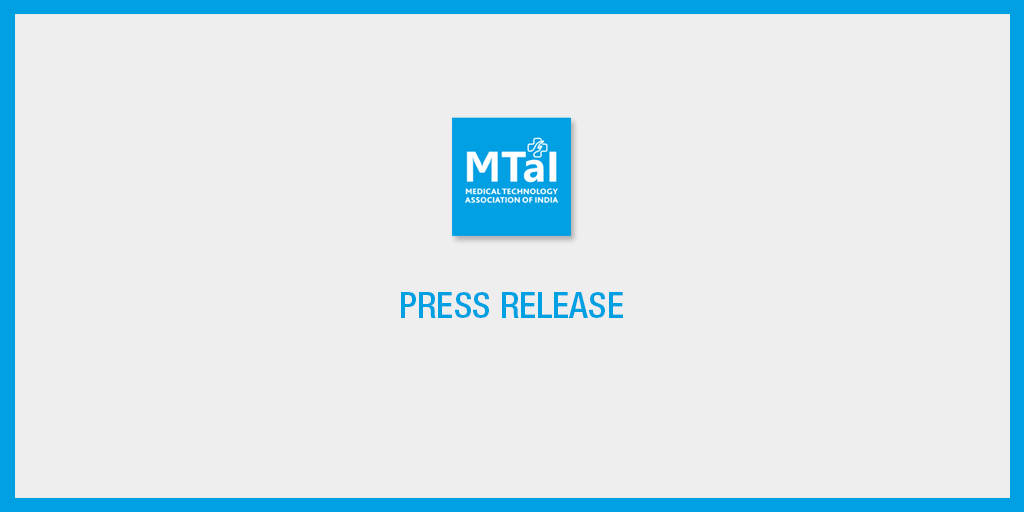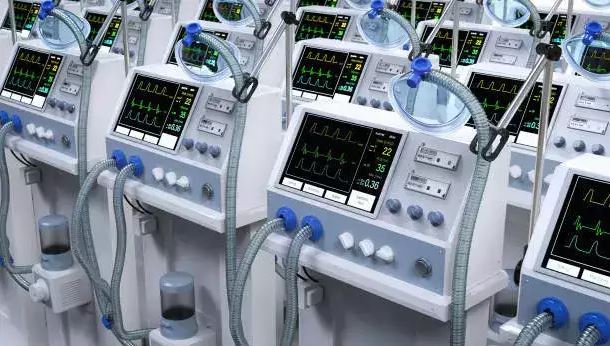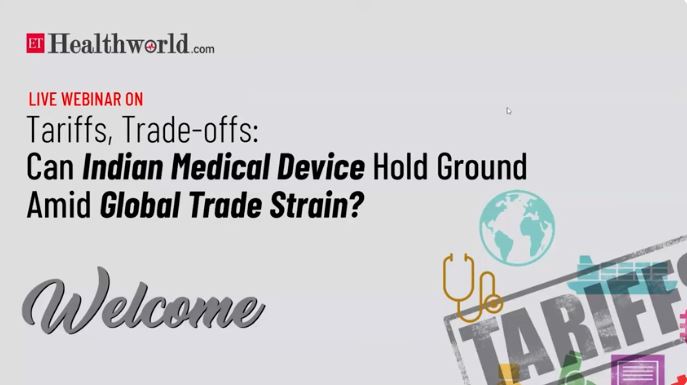- A nuanced policy approach required to ensure recovery happens
- Some Global firms suffered even up to 85% fall in revenues in April-June 2020.
- 5% health cess, rupee depreciation, cost escalation, pricing restrictions are major hurdles in recovery and future investments
Medical technology sector is expected to recover to the pre-COVID19 level only by June-December 2021 at best as companies continue to earn lower than projected revenue due to weak demand and high cost, Medical Technology Association of India (MTaI) said on Thursday. MTaI represents leading research-based medical technology companies with a large footprint in manufacturing and training in the country.
Innovation-led global medical device manufacturers suffered up to 85% drop in revenue in most of the segments during April-June 2020. In the July-September quarter, the decline has slowed a little but the future growth looks constrained due to continuing socio-economic challenges posed by the COVID-19 pandemic, compounded by rising import and operational costs, rupee depreciation against US dollar, and some policy measures that could threaten the viability of Medtech companies.
The financial year 2019-20 dealt severe blows to the medical technology sector in different ways. The first blow came even before COVID-19 which was the 5% ad valorem health cess imposed on imported medical devices. This, coupled with the INR depreciating by almost 7-8%% in March 2020 against the EUR and the USD, meant a very significant hit for the medical technology industry where more than 80% of the products are imported. Then came COVID-19 pandemic along with the nationwide lockdown, and elective surgeries shrank dramatically. Many healthcare workers migrated to their hometowns. Star doctors (who are mostly in their 50s and 60s), who are the magnets for procedures, also became less available in hospital premises due to their vulnerable age. Hospitals got hit because the impact of apportioning part of the beds for COVID facilities was not clearly foreseen on non-COVID procedures. The cost of dedicated COVID corridors and infection control measures hit the hospitals further and their bottom lines shrank. All this meant postponement of capital expenditures and stringent monitoring of inventories. The patient started procedure shopping and the hospitals began reducing their product inventories.
What is on the horizon? Epidemiological experts say that normalcy will return only past June 2021. MTaI Chairman and Director General Mr. Pavan Choudary concurs saying, “Part of the problem is universal, stretching across the globe. Some other part is unique to India – this is the part we would like to draw government’s attention to. The 5% health cess ad valorem imposed on imported medical devices have added to the woes of the industry. Almost all the companies in the industry have heeded to the call given by the prime minister to preserve the jobs and the industry has done so. However, the global management’s stamina for generosity shakes when they realize that a percentage of their shrinking corpus, which is meant for their employees, is going to the government exchequer”.
“Retrenchment has already started in the industry and this has a domino effect extending from the jobs loss to the jobs which would have otherwise been generated in the normal course in the healthcare worker industry. It should be noted that maximum number of employees in the global medical companies are actually engaged in healthcare worker training on procedures and techniques. It is they who have created almost the entire market in India and made the universe of Healthcare workers, patient ready. Also, the tariff policy of the country should be shorn of ideology and based on empirical data which clearly suggests that high import tariffs don’t work to bring FDI in manufacturing (in the 90s the tariffs on medical devices were to the tune of 40% and the proportion of imported to domestically manufactured good was more or less the same even then),” said Mr. Choudary.
“This gets contrasted with several other countries which have dropped custom duties in the wake of COVID19 pandemic”, he adds.
MTaI Director Mr. Sanjay Bhutani says, “The new health cess along with the previously imposed price control on stents and knee implants is proving to be detrimental to the government’s intention of bringing in FDI in not just manufacturing but in R&D sector as well. As far as the recovery outlook is concerned, the COVID recovery has not been consistent and even the regions which were recovering well are falling back because of returning COVID19 waves. Revenues of some global companies such as those in the orthopaedic or cardiology space were hit up to 85% and almost all other segments experienced a fall in revenue on similar lines in the first quarter of this financial year. As per our analysis, the industry is likely to recover to pre-COVID 2019 values only in second half of the year 2021, with different recovery rates across different segments.
Mr. Bhutani further states, “As the industry looks ahead to start the recovery, it is essential that a nuanced approach is taken considering the strengths and weaknesses of the sector before creating new policies as this is the best time to attract investments else we would miss the bus.”
About Medical Technology Association of India (MTaI)
Medical Technology Association of India (MTaI) is an association of research-based medical technology companies who have made significant investments in Manufacturing, R&D and Healthcare Workers Training in India. All the time stressing on the three hallmarks of healthcare – Quality, Consistency and Patient Safety, MTaI is a responsible voice of the industry. The association is committed to improving access to affordable and quality healthcare for patients.
Join MTaI on Facebook: @mtaiorg | Twitter: @mtaiorg | Website: https://mtaiindia.org/




